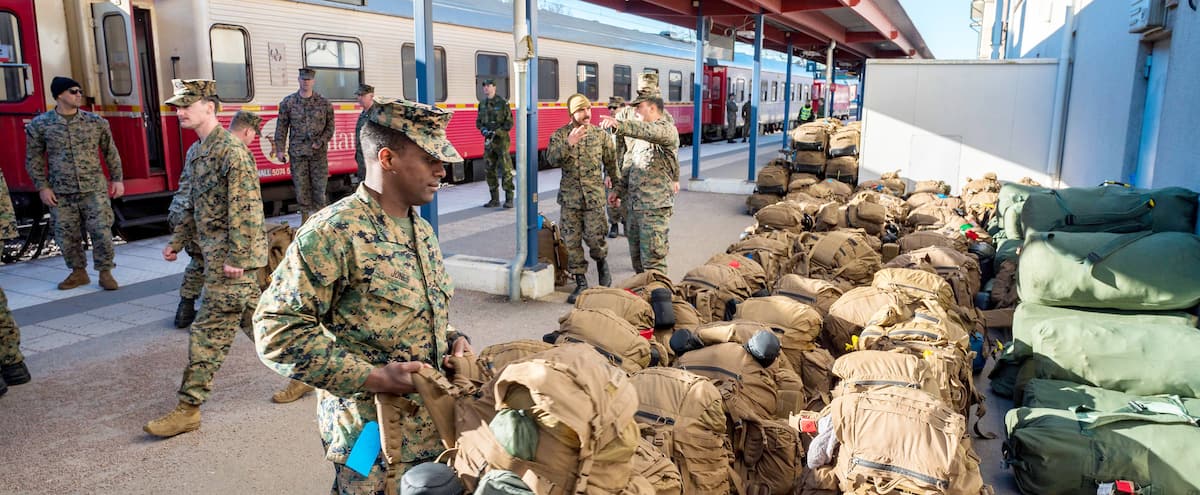Sweden fears Russian aggression, so much so that its army organizes its largest military exercise in 30 years with fictitious bombings and the participation of 13 allied countries, but not Canada.
More than 25,000 soldiers have been mobilized since Monday across the country, from Stockholm to the Far North, as part of the Aurora 23 exercise. They come from all over Sweden and 13 allied countries, including the United States, the Great -Britain, France and Ukraine.
Photo Robin S. Krüger, Swedish Armed Forces
United States Marine Corps soldiers arrive in Skövde, Sweden to participate in the Swedish Armed Forces exercise Aurora 23.
Canada, a friendly country and the first to agree to Sweden’s accession to NATO last year, was invited to participate in this important show of force, as early as last fall. But, faced with a serious shortage of personnel, he declined the invitation, for lack of resources.
“It’s important to move our capabilities where we need them,” said the Log Defense Minister Anita Anand.
Historical exercises
The newspaper is in Sweden to follow these historic military exercises for a country that has wanted to be neutral, a bit like Switzerland, for 150 years, but which has radically changed its tune since the Russian invasion of Crimea, Ukraine, 2014. The change of course then accelerated when the bombs hit Kyiv in February 2022.
“The whole notion of eternal peace in which we believe has collapsed, it’s as if the sky had fallen on our heads, indicates Stefan Hedlund, expert professor in Russian studies at the University of Uppsala. Prior to 2022, the threat was theoretical; now it has become an accepted fact of all.”
As a result, the country reinstated compulsory military service, trained its civilians for resistance, and applied to join NATO.
More than 400,000 ordinary citizens, whether civil servants, teachers, computer scientists or even bus drivers, received their war assignments on December 31 and are ready to be mobilized. On Monday, public radio broadcast a mobilization notice for Aurora for them, which sounded like a real call to war.
“It’s a big deal. It’s been in the works for a long time,” says Hedlund. We want to send a message to the Russians, to tell them: if you try something, the cavalry is ready. We also want to show NATO what we can do.”
On the program: simulation of air attacks in the middle of the city, massive influx of wounded in hospitals, cyberattacks on strategic infrastructure, etc. Objective: to increase the joint operational capability of the Swedish army, but also to contribute to the stability of the Baltic region.
A region under high tension
A region where Canada is more present than it has been since the end of the Cold War. No less than a thousand Canadian soldiers are deployed in Europe, in particular just across the Baltic Sea, in Latvia, 500 km from Sweden, where the Canadian Armed Forces lead a NATO battle group .
The Royal Canadian Navy also cruises very regularly off Sweden, in the Baltic Sea, in an essential maritime corridor for the supply of weapons to Ukraine and vital for the Baltic countries. These waters are under high tension due to the heavy presence of armed Russian submarines and ships.
This report was produced thanks to a grant from the Fonds québécois en journalisme international.



